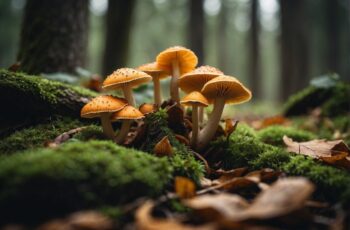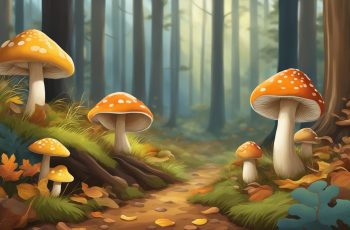Mushroom foraging is a rewarding outdoor activity that combines the joy of exploration with the pleasure of discovering edible treasures in the wild. As a beginner, you’ll be joining a community of nature enthusiasts who appreciate not just the culinary delights that wild mushrooms offer, but also the excitement of the hunt. Equipped with the right knowledge and tools, anyone can learn the basics of identifying, collecting, and enjoying edible mushrooms. Remember, safety is paramount in mushroom foraging; correct identification is essential as some species are poisonous.
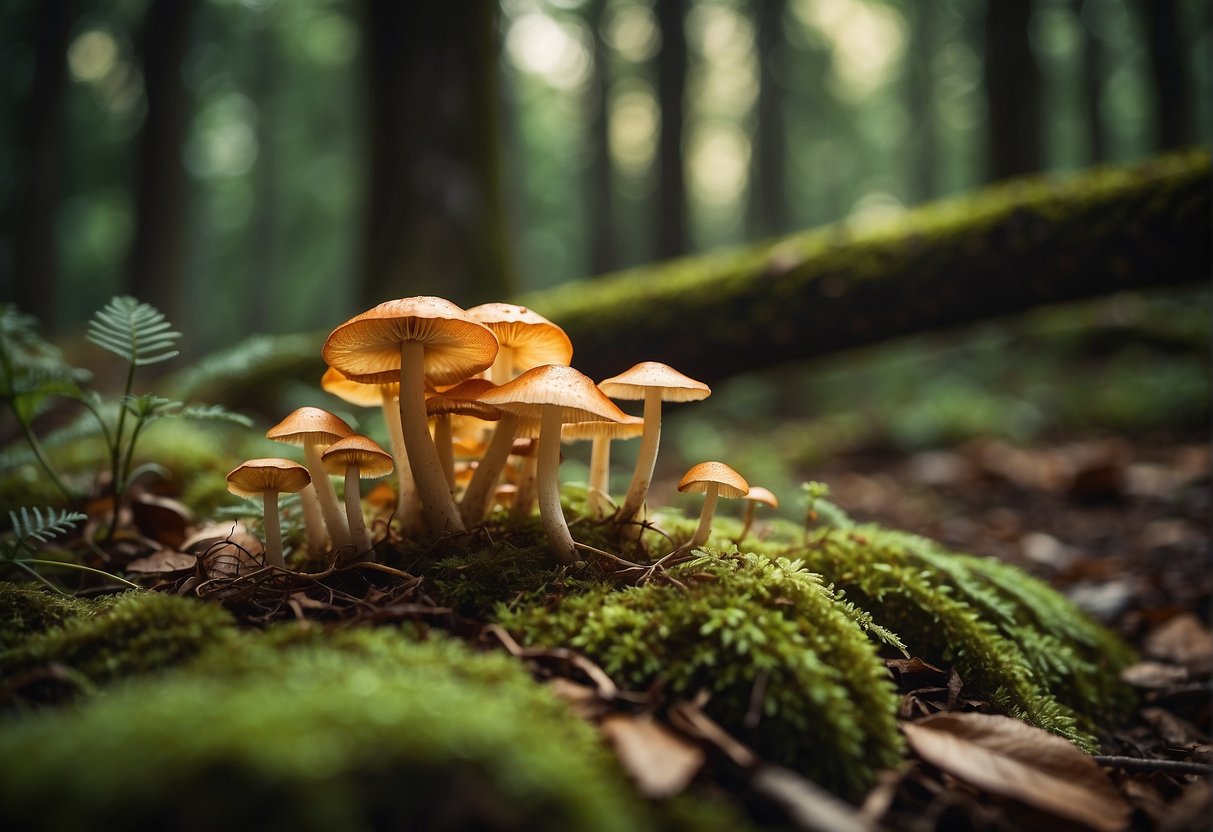
With practice and guidance, foraging novices can progress to become expert mushroom hunters. Advanced foraging techniques involve understanding mushroom habitats, seasons, and the subtle signs that indicate the presence of specific fungi. The rich variety of mushrooms you find can enhance your cooking, offering flavors and textures that aren’t available at your local supermarket. Mushroom foraging isn’t just a solitary pursuit; there are communities and groups that organize forays into the forest, share knowledge, and celebrate the fungal kingdom. Participation in such groups can greatly accelerate your learning curve.
Key Takeaways
- Mushroom foraging is accessible to beginners and offers culinary benefits.
- Proper identification and safety are crucial elements of the foraging process.
- Engaging with the foraging community enhances your expertise and impact.
Getting Started with Mushroom Foraging
Embarking on a mushroom foraging journey equips you with not just a basket of mushrooms but also an intimate connection with nature. Here’s how you can start.
Understanding Mushroom Basics
You’ll find that mushrooms are an incredibly diverse kingdom, with species ranging from the highly sought-after chanterelle to the dangerous death cap. Know your fungi, as this will be fundamental to your foraging success.
Essential Foraging Equipment
Gather a foraging toolkit before your expedition with essentials like a basket or a mesh bag to allow spores to disperse, a sturdy pocket knife for harvesting, and a compass or smartphone for navigation. These are non-negotiables for any forager’s pack.
Foraging Safety and Ethics
The foraging community values safety and respect for the environment greatly. Always apply bug spray, check for ticks, and stay mindful of your impact on forests and woodlands. Misidentification carries risks, highlighting the vital importance of safety in foraging.
Using Foraging Apps and Books
Leverage technology and literature to enhance your foraging experience. Apps guide you through unknown terrain, while books like “The Complete Mushroom Hunter” or “Mushrooming Without Fear” provide invaluable insights into mushroom varieties and foraging techniques.
Identifying Edible and Poisonous Species
Your ability to differentiate between edible and poisonous mushrooms is crucial. Species like the morel are delectable, while the destroying angel can be lethal. Arm yourself with knowledge, possibly from experts like David Arora or Gary Lincoff.
The Role of Weather and Seasons
Weather and seasons play a critical role in mushroom foraging. Temperature, moisture, and heavy rain affect fungal growth. Mushrooms thrive in damp and humid conditions, making post-rain forests prolific hunting grounds.
Selecting the Right Foraging Spots
Scout areas near streams or creeks, or around the base of oak trees. The environment should be moist but not waterlogged. Mushrooms often prefer the cover of tree trunks or fallen branches, always within the embrace of nature.
Advanced Mushroom Foraging Techniques
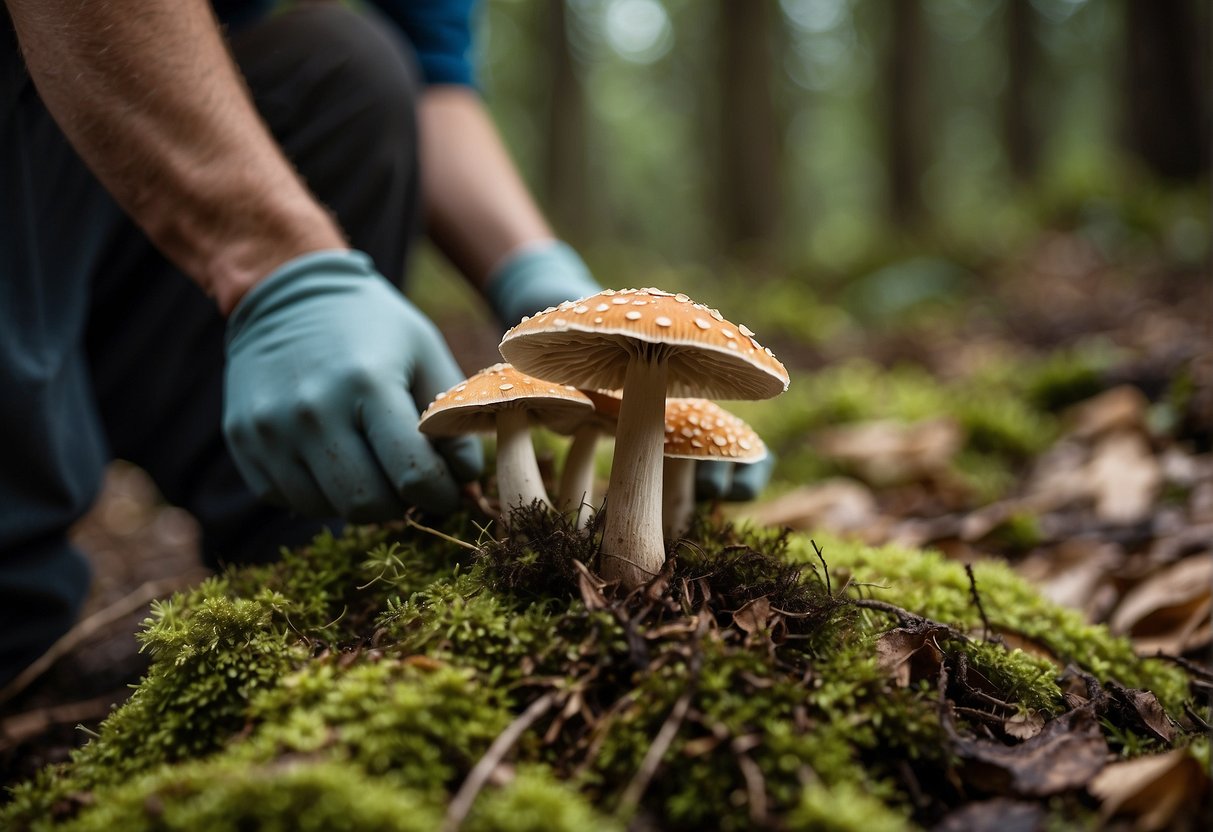
To become proficient in mushroom foraging, you must excel in species identification, comprehend the various habitats, and adapt to foraging across different regions. Let’s enhance your knowledge with some specialized techniques.
Detailed Mushroom Identification
Identifying mushrooms with precision is crucial. Focus on distinctive features such as cap shape, color, gills, stem characteristics, and scent. Utilize spore prints to differentiate similar species; for example, a chanterelle mushroom has a white to pale-yellow spore print. The detailed identification of morels requires careful examination of the honeycomb-like ridges and pits on their caps.
- Oyster mushrooms: Typically found on the sides of trees, they possess a unique oyster-shell shape, white to gray colors, and a mild, anise-like aroma.
- Puffball mushrooms: Large, round, and white when young; check that the interior is pure white before consumption.
- Porcini mushrooms: Famed for their rich, nutty flavor, look for their thick stem and the fine white network on the brown cap.
Understanding Mushroom Habitats
The environment where mushrooms grow is as important as the mushrooms themselves. Chanterelles often flourish in damp, mossy coniferous forests. Pay attention to habitats such as fallen logs, stumps, and the edges of forests as well. Morels tend to associate with certain trees like ash, elm, and apple, particularly in burned-over areas or in the Midwest after a rainy spring.
- Pacific Northwest: Renowned for its rich ecosystem, perfect for a variety of mushrooms, including highly sought-after porcini.
- Northeast: Hardwood forests here can be a haven for chanterelles, especially after heavy rains in the summer.
Foraging in Diverse Regions
Adapting to different regions can expand your mushroom-hunting success. In North America, each area from Canada in the north to the South presents unique opportunities and challenges.
- Midwest: Known for abundant morels, especially after wet conditions.
- Pacific Northwest: Offers a vast array of mushrooms beyond chanterelles, such as the meaty King Bolete.
- Northeast: Apart from chanterelles, this region is also conducive to finding black trumpet mushrooms in shady and moist conditions.
By honing your identification skills, understanding the ecosystems that fungi prefer, and becoming familiar with the peculiarities of regional habitats, you’ll elevate your foraging to new heights.
Culinary Uses of Foraged Mushrooms
Foraging mushrooms offer a broad range of flavors and textures for your culinary endeavors, from earthy soups to hearty main dishes, enriching every meal with both taste and nutrition.
Preparing and Cooking Wild Mushrooms
Before transforming your foraged fungi into a delicious meal, it’s crucial to clean and inspect each mushroom carefully. Remember, chanterelles are fantastic sautéed with garlic and butter, while hen-of-the-woods adds substance to risottos and meaty dishes due to its dense texture. On the grill, portobellos make for a succulent, meat-like centerpiece. Be sure to cook chicken of the woods mushrooms thoroughly, as they can be an excellent substitute for chicken in stews and stir-fries due to their texture.
Health Benefits and Nutritional Value
Mushrooms are not just rich in flavor; they are also packed with nutrients. Chanterelle mushrooms provide significant amounts of vitamin D and C, while the sought-after maitake, also known as hen-of-the-woods, supports the immune system. For a snack, consider making lobster mushroom jerky, which retains most of the nutrients and can easily be packed for your outdoor adventures. King bolete mushrooms are known for their protein content and can be a healthy addition to any meal.
Preserving Your Forage
When you’ve gathered more mushrooms than you can use, preservation is key. Dehydrating is one of the best methods to preserve the flavor and nutrition of mushrooms like chanterelles and king boletes. You can also pickle certain varieties, such as lobster mushrooms, for a tangy treat. Freezing is another option, especially for mushrooms prepared in recipes, such as soups or sauces. This ensures that your foraging efforts will stock your pantry with ingredients for months.
Joining the Mushroom Foraging Community
In the arena of mushroom foraging, connecting with seasoned foragers and participating in local events can greatly enrich your experience. It’s about more than just finding mushrooms—it’s about becoming part of a community with shared passion and knowledge.
Connecting with Local Foragers
To immerse yourself in the mushroom foraging community, start by seeking out local mushroom hunters. Often, you’ll find that many areas have Facebook groups or other online forums where you can reach out to fellow enthusiasts. For example, learning from those who regularly forage along the river walks can provide insights into regional hotspots and fungi species.
How to Connect:
- Search for local online forums or Facebook groups.
- Engage in discussions and ask questions.
- Consider joining regional mushroom clubs or societies.
Not only are these platforms great for learning and advice, but they can also lead to new friendships and foraging partners, making your forays into the woods a shared adventure.
Attending Foraging Events and Workshops
Workshops, classes, and organized forays offer invaluable, hands-on experience. These events are often led by expert mycologists and provide a structured, educational environment to enhance your foraging skills. They can range from beginner introductions to advanced identification techniques.
For those just starting out, The Ultimate Guide to Mushroom Foraging for Beginners suggests that learning in person from experts can save you from common pitfalls.
Events to Consider:
- Local mycological society workshops and forays.
- Mushroom festivals and foraging retreats.
- Classes held at nature centers or botanical gardens.
When you attend these events, you not only learn about mushroom hunting but also contribute to the tradition and preservation of foraging knowledge. With each event, you’ll gain more confidence and start to recognize how the subtleties of the forest lead to fruitful harvests.
Responsible Foraging and Conservation
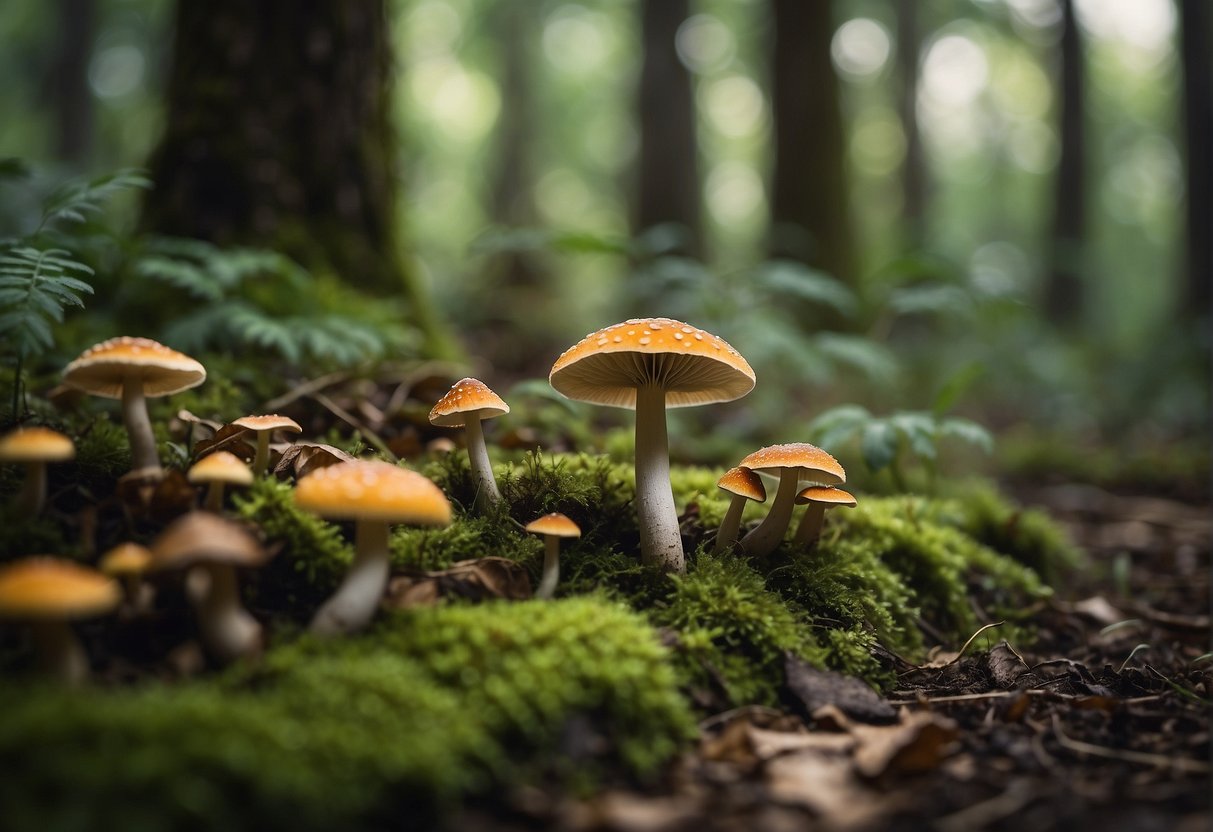
When you venture outdoors to forage for mushrooms, your practices have a lasting impact on nature’s delicate ecosystems. It’s vital to balance your harvest with responsible behavior to ensure that these treasures are available for generations to come.
Promoting Sustainable Foraging Practices
Foraging Safely: Begin your foraging journey with education. Understanding which mushrooms are safe to pick and eat is critical to avoid potentially dangerous mistakes. Seek out knowledge from credible resources like experienced foragers or organizations dedicated to mycology.
Respecting the Environment: While foraging, minimize your impact on the environment. This means sticking to paths where possible, avoiding damage to plant life, and being mindful of wildlife habitats. When picking mushrooms, do it gently so as not to disturb the spore-producing parts of the fungi.
-
Harvesting Ethically: Only take what you need and leave enough behind to allow for regeneration. This practice, often referred to as ethical foraging, not only ensures the continuation of the mushroom life cycle but also helps to maintain the stability of the ecosystem.
-
Local Regulations and Guidelines: Stay informed about and adhere to local conservation laws and guidelines. Some areas may have specific rules about what can be foraged and when.
Educating Others: As part of the foraging community, share your knowledge and promote sustainable practices. Encourage fellow foragers to be mindful of their impact on the environment to foster a culture of conservation.
By adopting these sustainable practices, you contribute to the conservation of our precious outdoors and help to preserve the balance of nature. With every mushroom you collect, remember that you’re part of a larger community of people and organisms, all interconnected within the environment.

